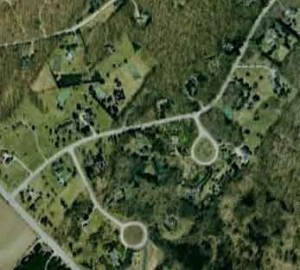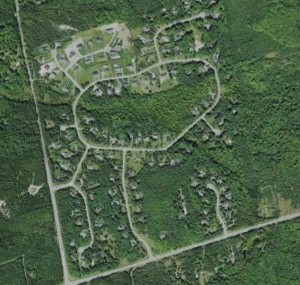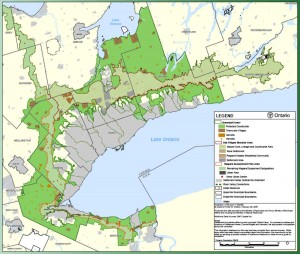Two recent articles in the Globe and Mail offer contrary opinions about the Greenbelt, which is being reviewed in 2015 for possible expansion. Tom Curtis, a real estate policy professional, argues that it has led to increased house prices by restricting land supply, and contributed to the “Manhattanization” of Toronto’s downtown core, gentrification and overcrowded transit. Jennifer Keesmat, the chief planner of the City of Toronto, replied that house prices have risen in many Canadian cities, regardless of whether they have greenbelts, and that greenbelts make cities more livable, affordable and transit-friendly. Curtis suggests that greenbelts raise issues of social fairness by reducing housing affordability; Keesmat claims that they help to promote walkability, cyclability and transit use.
While I support anything that makes cities more walkable, in Toronto’s case I think there is little evidence to support the idea that it is specifically the Greenbelt that is encouraging this, or that it is somehow responsible for rising house prices.
The Greenbelt is one of three related provincial plans, which are discussed in the entry on this website for Chapter 9 – Containing Growth. The others are the Growth Plan, which aims to concentrate future growth in 25 urban centres, and the Big Move, which promotes transit to and between those centres through its agency Metrolinx. It is the Growth Plan and the Big Move that explicitly promote concentration, walkability and transit use. The Greenbelt is in the background, a sort of symbolic barrier to future expansion. There is ample space for urban expansion until at least 2030 at the denser levels required in the Growth Plan. Some time after that urban development will, in effect, bounce back off the Greenbelt or leap over it. In the City of Toronto, at least, the prices of detached houses have risen steeply is because of underlying economic reasons that have affected much of Canada, compounded by the fact over 90 per cent of all the dwellings built there in the last few years have been apartments or townhouses (see my Feb 2014 post about Condominiums on this website). There’s a growing shortage of single-family detached houses in the City of Toronto.
The Greenbelt Plan defines the Greenbelt “as where urbanization should not occur in order to provide permanent protection to the agricultural land uses and ecological features and functions.” It’s easy to imagine it as a pristine belt of countryside, something reinforced by maps that display wide bands of green, for instance between Newmarket and Richmond Hill. This is not the impression you get from driving this stretch of Yonge Street, which is almost continuously urbanized. Indeed, examine almost any part of the Greenbelt on Google Earth and you can see extensive areas of exurban housing, much of it on two and five acre lots mostly screened from people in passing cars by bands of trees. With towns, and exurban estates, gravel pits and quarries, golf courses and horse farms, the Greenbelt is as much an example of low density urbanization as of protected natural heritage and green spaces. This is not a criticism, but a recognition of how things are. Here are two examples, respectively from near the Forks of the Credit and Ballantrae.
Finally, from the perspective of the Greenbelt Plan Toronto apparently does not exist because it does not mention Toronto, not even once. This is especially remarkable given that the Greenbelt Plan states bluntly that “settlement areas outside the Greenbelt are not permitted to expand into it”, which clearly implies that it is intended to restrict the outward expansion of the built up area of Toronto. It is apparently not Toronto’s Greenbelt but some sort of free-standing green entity in south-central Ontario. This is remarkably disingenuous, not least because maps in the Greenbelt Plan show Toronto as a grey blob pushing up against the green of the Greenbelt. The visual message is clear.
I do think the Greenbelt Plan is important. It provides a strong and necessary measure of protection for the Oak Ridges Moraine and Niagara Escarpment, both of which are environmentally sensitive. But it is weakened by it failure to attend to what are obvious realities in and around the Greenbelt. Any worthwhile review has to acknowledge that the Greenbelt is part of a comprehensive regional planning process, that it protects extensive areas of previously developed low density, automobile dependent exurban housing, and that it surrounds and will limit the outward expansion of the urban area Toronto and Hamilton.


